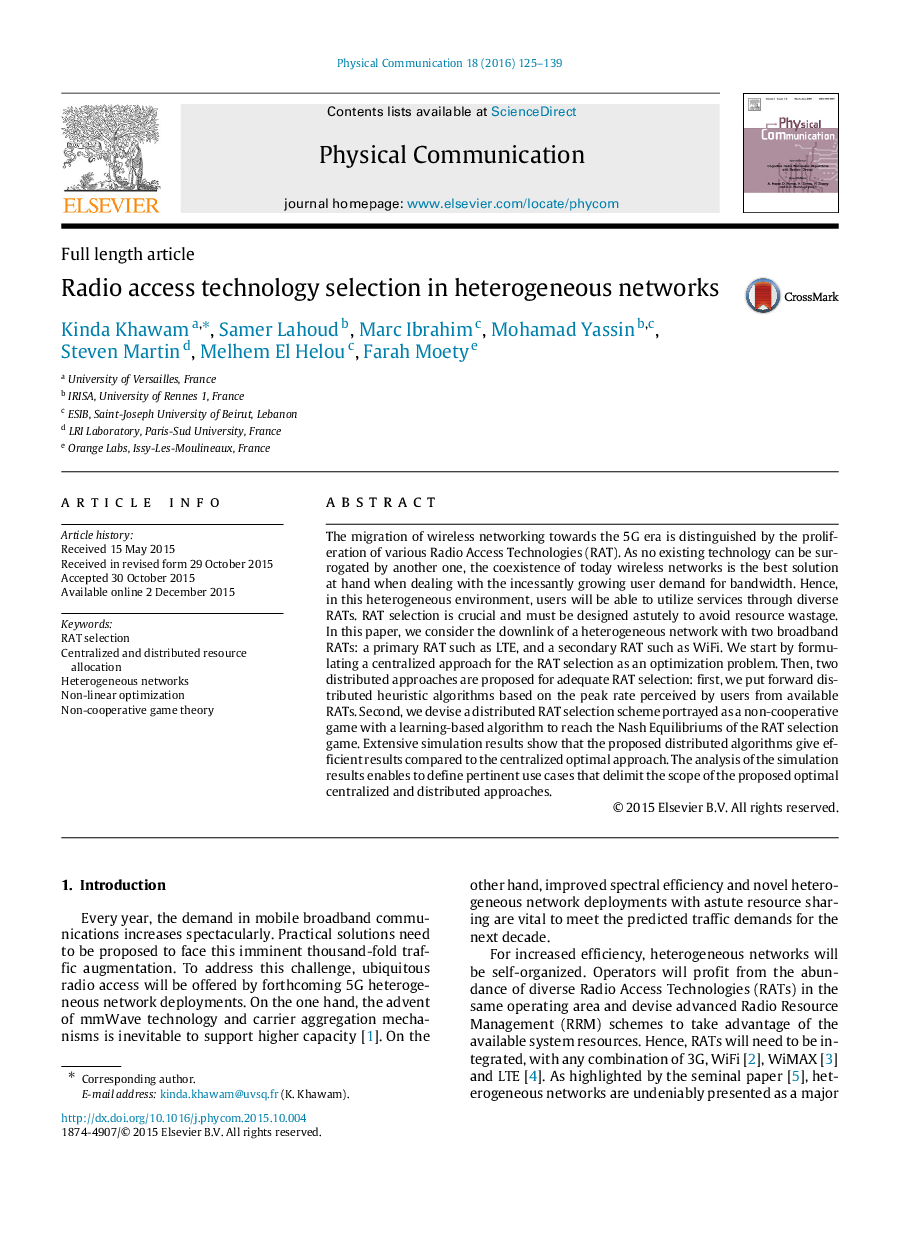| Article ID | Journal | Published Year | Pages | File Type |
|---|---|---|---|---|
| 466656 | Physical Communication | 2016 | 15 Pages |
The migration of wireless networking towards the 5G era is distinguished by the proliferation of various Radio Access Technologies (RAT). As no existing technology can be surrogated by another one, the coexistence of today wireless networks is the best solution at hand when dealing with the incessantly growing user demand for bandwidth. Hence, in this heterogeneous environment, users will be able to utilize services through diverse RATs. RAT selection is crucial and must be designed astutely to avoid resource wastage. In this paper, we consider the downlink of a heterogeneous network with two broadband RATs: a primary RAT such as LTE, and a secondary RAT such as WiFi. We start by formulating a centralized approach for the RAT selection as an optimization problem. Then, two distributed approaches are proposed for adequate RAT selection: first, we put forward distributed heuristic algorithms based on the peak rate perceived by users from available RATs. Second, we devise a distributed RAT selection scheme portrayed as a non-cooperative game with a learning-based algorithm to reach the Nash Equilibriums of the RAT selection game. Extensive simulation results show that the proposed distributed algorithms give efficient results compared to the centralized optimal approach. The analysis of the simulation results enables to define pertinent use cases that delimit the scope of the proposed optimal centralized and distributed approaches.
